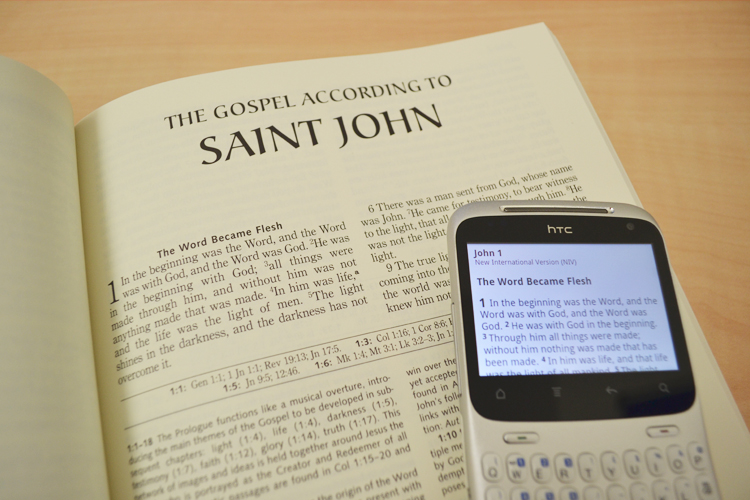
Scripture and Tradition together constitute the single deposit of revealed truth given by God to the Church.
What is Scripture?
Scripture is the library of 73 books called the Bible. It is the entire content of God’s inspired written truth, revealing himself and his saving plan. Scripture is divided into the Old Testament, written before the birth of Jesus Christ, and the New Testament, written after his death and Resurrection.
Given its importance for salvation, God, through the inspiration of the Holy Spirit, has guaranteed that the Bible records faithfully and without error, everything that he wanted written and no more (c.f. Dei Verbum 11).
What is Tradition?
Tradition is what is revealed by God and handed on by the apostles, including those things not explicitly recorded in Scripture. ‘Tradition’ comes from the Latin tradere, which means ‘to hand on’. The disciples taught before they wrote, and this oral teaching remained authoritative alongside written Scripture.
So then, brethren, stand firm and hold to the traditions which you were taught by us, either by word of mouth or by letter. 2 Th 2:15
Tradition expresses that breadth of divine teaching which cannot be exhaustively communicated in any one written form, as the apostle John states:
There are also many other things which Jesus did; were every one of them to be written, I suppose that the world itself could not contain the books that would be written.
John 21:25
Some truths of Tradition have subsequently been given dogmatic definition by the ‘Magisterium’. Examples are the number of sacraments and Mary’s Assumption. The definition and correct interpretation of the books of Scripture is itself the fruit of the Tradition. Other manifestations of Tradition can be found in the liturgy, art and music of the Church.
What is the Magisterium?
The Magisterium is the teaching office of the Church exercised by the Pope, the successor of Peter, and the bishops in union with him. With the authority of Jesus Christ and the guidance of the Holy Spirit, the Magisterium teaches infallibly the revealed truth which Scripture and Tradition communicate.
I would not believe in the Gospel, had not the authority of the Catholic Church already moved me.
St Augustine, Contra Epistolam Manichaei 5, 6 (ccc. 119)
The principal teachings of the Magisterium are the dogmatic decrees of the papacy, the Creeds and the other doctrines of the twenty-one Ecumenical Councils of the Church since the time of the apostles.
How do I read Scripture authentically?
Read as one – The Bible must be read as a unified work in which God has chosen to reveal himself. Although made up of diverse texts from different times and cultures, the Bible reveals a single story of God’s providence and salvation. The Old Testament points towards its fulfilment in the New; the meaning of the New Testament is fully revealed by the Old.
Read within the Tradition – God has entrusted the whole of Scripture to the Church. It is only by the Church’s authority that the Bible’s 73 books are recognised as the unified word of God. Only the Church has the right and capability of authoritatively expounding Scripture.
Read in the literal sense – The literal sense is the primary and direct sense of Scripture which God intends to convey through human agency. It is the meaning the writer intends, the interpretation of which is aided by the study of history and context. A literal reading does not mean a literalistic reading of texts intended as metaphors or parables.
Read in the spiritual sense – God has ensured that the realities referred to in the Bible can also point to other realities. Allegory links something mentioned in Scripture, especially in the Old Testament, to Christ or the Church. The Moral Sense links the things of Scripture to the Christian life of grace. Anagogy links the realities of Scripture to those of heaven.
This article is originally from ‘CREDO: The Catholic Faith explained’ by CTS.